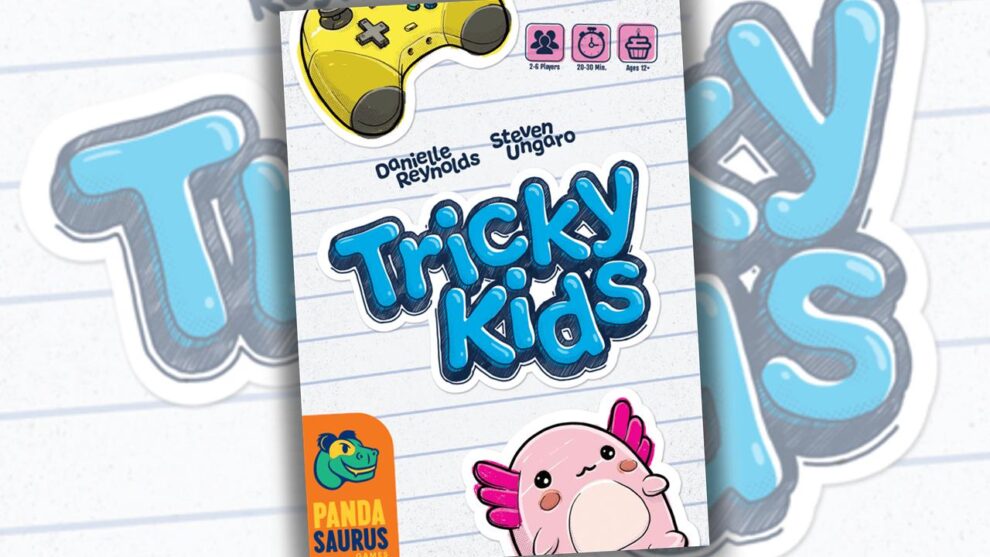Disclosure: Meeple Mountain received a free copy of this product in exchange for an honest, unbiased review. This review is not intended to be an endorsement.
Players in my network like to ask me how many times I play a game before I write a review. It does depend on the game, but it often depends on how the first play goes. If the game is bad, I usually try to play it twice, in part to see whether I have a similar experience the second time around. (It’s very hard to table a bad game multiple times, because the players in my review group don’t want to play it again.) A good game is easy to get to the table, but I like to play those three or four times to ensure that others validate my initial feelings. (And, sometimes, I play a game 14 times. Again, it just depends.)
Here’s what I will say about Tricky Kids, the new trick-taker from designers Danielle Reynolds (Caution Signs) and Steven Ungaro: my first two plays produced such wildly different experiences that it marks one of the very few times this year where I played a game where some players absolutely loved a game and a different group completely hated it.
This is why it’s important to get a game to the table for a few plays!
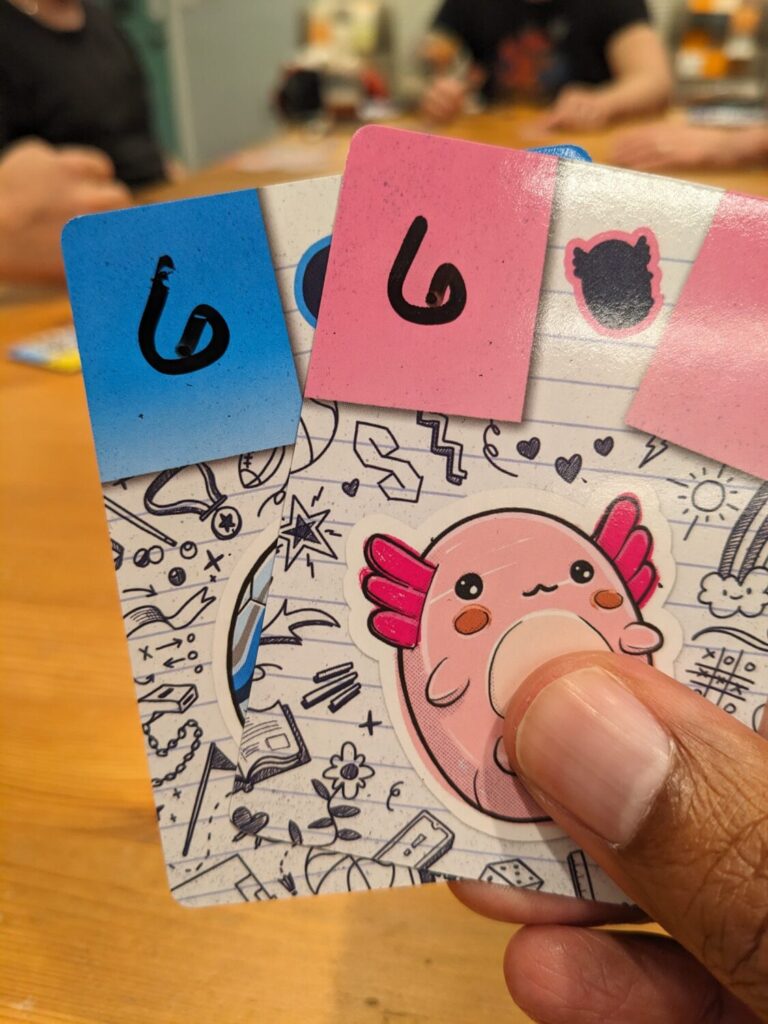
The Highs Were High
Tricky Kids is a must-follow, no-trump trick-taking game for 2-6 players. It plays in about 30 minutes. The main hook with Tricky Kids: using cards in three different suits, players write values on each card using a pool of 21 points to spread across the seven cards they keep to play in each round (from an initial hand of nine cards).
After cards are dealt, players use their dry-erase marker to add values using their point pool. There are three card suits: soccer balls, controllers, and stuffies. A player might, for example, add the following values to their seven cards: 0, 1, 2, 3, 4, 5, and 6. Or, they might go with six zeroes and a 21. Maybe they’ll go with a 10, a 6, and five 1s. The big thing is that players can’t use fractions and they can’t use negative numbers.
Then, a round begins with a random first player—someone spins their dry-erase marker, and whoever it points to begins the trick. The lead player leads with one of the three suits, and if a player has that suit, they must follow by playing one of their cards that matches that suit. The player who played the highest card in the trick wins, but if there’s a tie, those cards cancel each other out and the player who played the next highest number in that suit wins instead. If a player doesn’t have a card in the led suit, they can throw off, but there are no trump cards, so this is simply a way to dump cards.
The trick’s winner takes a point token from the table; the value is the point line on that token matching the suit used to win, ranging from 0-5 points. After circling the points earned on that point token, play continues with the next trick led by the player who won the previous trick. After seven tricks, the round is over; after three rounds, the game is over.
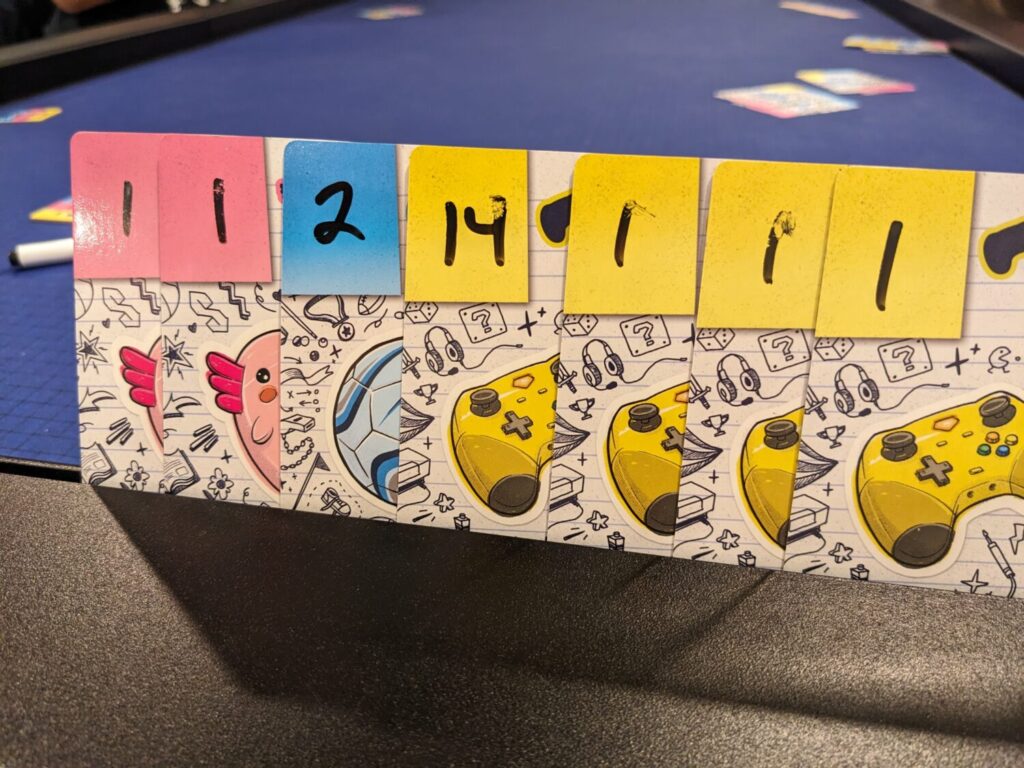
In my first game of Tricky Kids, I did a five-player game with my review crew. I couldn’t believe how well it went. Everyone sounded intrigued when they learned that they were essentially building their hand each round by creating the values based on their preferences. There were pointed moments of laughter—the best thing to happen in Tricky Kids is when two or more players tie for the highest card, leading to another player having the new high—and a very tight set of final scores.
One of those players went online to buy a copy of the game while we were still playing. The play time was brisk. We kept checking everyone’s math, to ensure that no one was cheating. (Players who accidentally use a value total higher than 21 lose all their point tokens for a round.) The 21st and final trick of the game ended with a player playing a very high card…then getting beaten by the very next player, who had a card valued one pip higher to win the final point token and the game by a single point.
I immediately produced a draft of this review, discussing the highs of the experience. But then I paused; I wanted to show the game to my Wednesday group, a group that has at least one trick-taking game on the table almost every week. They would be a better test of the game’s experience, so I broke it out two days after the review crew play.
It didn’t go well.
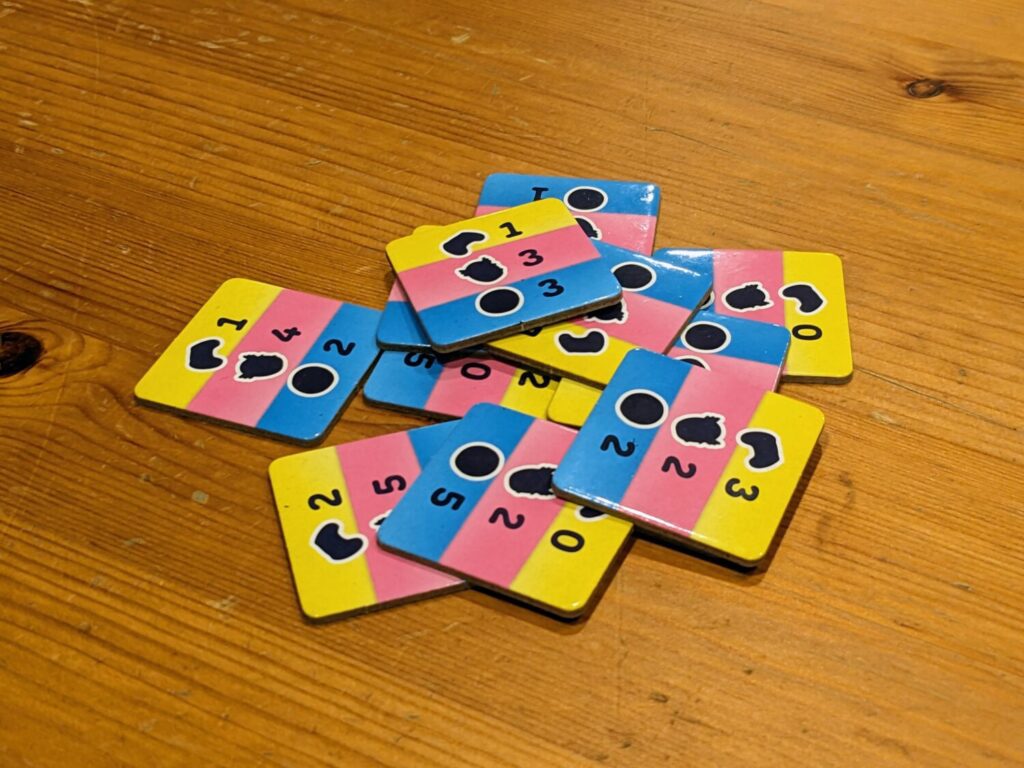
“You Should Rip That Card Up”
For the Wednesday play, we did a full six-player count. We also used the “Tricky Rule” cards, which add an optional event system similar to how Rebel Princess Deluxe Edition changes some of its rules each round to keep players on their toes.
This turned out to be a mistake right out of the gate. We drew the “Yoink!” card: at the end of the game’s first round of seven tricks, all point tokens must be passed to an adjacent player…meaning any scoring that you do is simply given to someone else.
“You should rip that card up right now,” a player said after he was forced to pass three point tokens to his neighbor at the end of the first round. “Like, why would I want to play any game where I am basically playing only to score for someone else?” The game’s rules indicate that card values have to equal 21, so you can’t get out of the Yoink! rule by simply writing zero on all seven cards in your hand. Even by accident, a player might win a few tricks, as evidenced by what happened during this round.
Things got worse from there. Players groused about the way dry-erase ink smudged on cards all night—the only blemish from my first play was also tied to the smudging issue. Across 21 tricks, we only had two tricks where the lead players tied, and in one case, that left us with no winner, meaning that the point token for that trick was simply discarded. In our second round, one player had six soccer ball cards and one stuffie card…and he led the first trick and won, which left the majority of that round in his hands because players slowly ran out of soccer ball cards and he kept leading more soccer balls! (Others had “short suited” soccer balls because the point values for soccer ball tricks were the lowest of the three suits in that round.)
The other Tricky Rules cards were not very interesting in that game. We had Fractions are Hard, which allowed for players to add half numbers to their cards and led to a planning phase before the round where I thought one player’s head was going to explode as he tried to make the math work. I Could Have Won If I Wanted To lets players write numbers on both the seven cards they have to, as normal, but also the two cards that are discarded each round. But players have to use their 21 points across nine cards instead of seven, so only two players tried to add values to their discards, in the hopes of earning a five-point bonus at the end of the round.
Then they tied in that effort, which meant no one got the five-point bonus!
The massive benefit that comes when a player goes first—randomly!!—really reared its ugly head in that second game. Two players didn’t score—including me, who didn’t win a single trick across 21 turns—and I was surprised at how often I had no chance of winning tricks as play progressed in each round of this game. In a high player count game, I could absolutely see some players not scoring or scoring minimal amounts of points, which may lead to some players being sidelined from being in the hunt in the second and third rounds of the game.
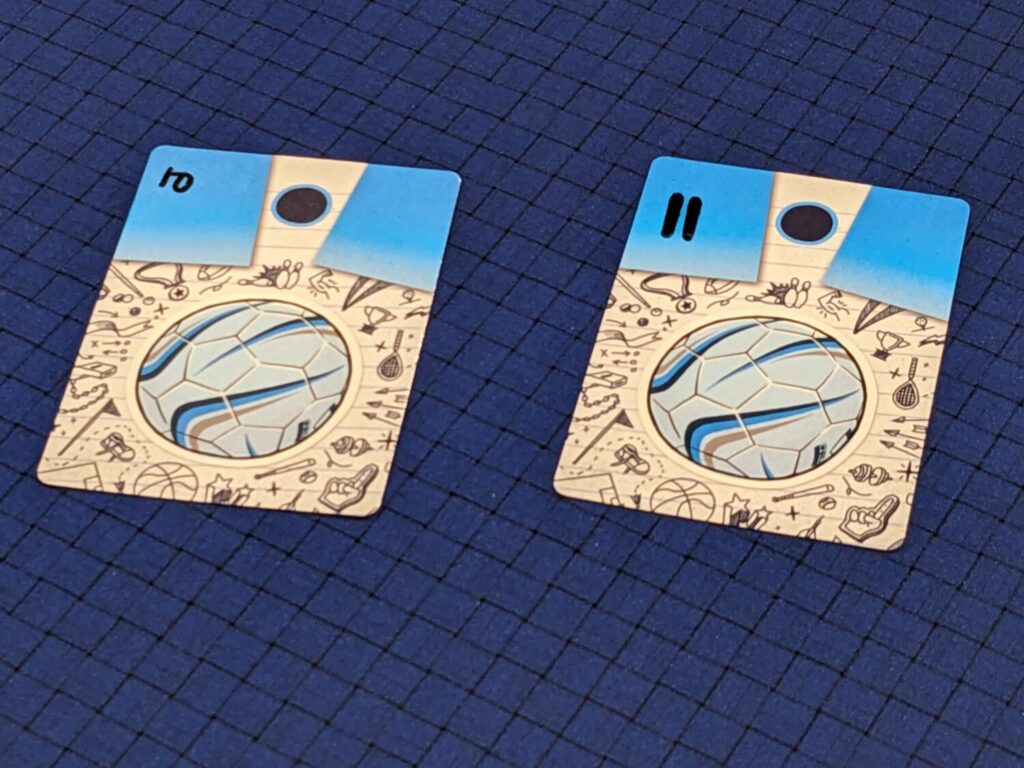
Where Do We Trick From Here?
Tricky Kids is a very…well, tricky game to recommend.
Here’s where I think it will land best—as a trick-taking game best suited for a low player count, maybe three or four players. (The game’s card count does not scale to player count, so there is always a nine-card deal with two discards and a 21-point spread that has to be applied to the seven cards.) Playing Tricky Kids with very casual players who won’t mind some of the luck elements on display here might also help.
I would use the Tricky Rules cards, but I would push to add at least one of the cards that raises the value allotment, such as Rich Kids, which doubles the allotment to 42 points for the round. I would consider house-ruling the start condition for a round: the player with the fewest points gets to start in the second and third rounds. That way, they have a chance to take advantage of the game’s must-follow system by having a small measure of controlling the first trick or two in order to score points.
Tricky Kids gets a lot of things right, but even my second play revealed some issues that I think will make it challenging to get it in front of my more serious trick-taking buddies in the near term. As a craft toy, Tricky Kids worked well for one of my groups and I think it will work well for my family, in part because my children love the chaos of games like Tricky Kids (and they both love Caution Signs, so Reynolds is a popular person in my household).
Come in with the right perspective, and Tricky Kids might be a fit. If you can, try it at a convention or with another person’s copy to get a feel for the game before committing to a purchase. For my final play, I did a two-player game with my wife…and she thought it was so-so. That left me with a full range of opinions: some highs, some lows, some mids. Tricky Kids really is tricky!


